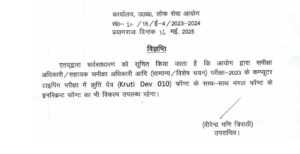Current Affairs 19th June 2023 for UPSC Prelims Exam
Similipal Tiger Reserve
Context: A forest officer patrolling the Similipal Tiger Reserve was allegedly shot dead by poachers.
About Similipal Tiger Reserve
- Location: Similipal Tiger Reserve is located in the Mayurbhanj district of Odisha. Geographically, it lies in the eastern end of the eastern ghat.
- It forms a part of the Mayurbhanj Elephant Reserve, which includes three protected areas—Similipal Tiger Reserve, Hadgarh Wildlife Sanctuary, and Kuldiha Wildlife Sanctuary.
- The reserve derives its name from the abundance of red silk cotton trees growing in the area.
- Red silk cotton trees, also known as Malabar silk-cotton trees or kapok trees, are large deciduous trees native to various regions in Asia, including India, Bangladesh, Thailand, and Cambodia.
- Important water bodies: At least twelve rivers cut across the plain area, all of which drain into the Bay of Bengal. The prominent among them are Burhabalanga, Palpala Bandan, Salandi, Kahairi and Deo.
- Vegetation in the reserve: The reserve encompasses a wide range of habitats, including tropical moist deciduous forests, tropical semi-evergreen forests, and grasslands.
- Sal is the dominant tree species here.
- Important fauna: The park is known for the tiger, elephant and hill mynah. It holds the highest tiger population in the state of Odisha.
- Protection status:
- It was formally designated a tiger reserve in 1956 and brought under Project Tiger in the year 1973.
- The Government of Orissa declared Similipal as a wildlife sanctuary in 1979. Later in 1980, Government of Orissa proposed a part of the sanctuary as National Park.
- It was declared a biosphere reserve by the Government of India in June, 1994.
- It has been part of the UNESCO World Network of Biosphere Reserve since 2009.
- Tribes in the region: Similipal forests is home to a variety of tribes. Prominent among these are Kolha, Santhala, Bhumija, Bhatudi, Gondas, Khadia, Mankadia and Sahara.

Current Affairs 17th June 2023 for UPSC Prelims Exam
Miyawaki Method
Context: Prime Minister Narendra in his latest ‘Mann ki baat’ episode spoke about Miyawaki method of plantation, as a solution to fight climate change.
About the Miyawaki Method
- The Miyawaki Method is a reforestation and afforestation technique developed by Japanese botanist Dr. Akira Miyawaki in 1970s.
- Reforestation refers to the process of replanting trees in areas that were previously covered by forests but have been deforested or degraded due to human activities.
- Afforestation, on the other hand, involves the establishment of forests in areas where they did not previously exist or where the forest cover has been absent for an extended period.
- This method aims to create dense and diverse forests in a short period of time, typically within 20 to 30 years, by imitating the natural growth process of forests.
- Key Principles of the Miyawaki Method:
- Planting native species: Emphasizes the use of native plant species that are well adapted to the local ecosystem.
- Dense planting: Trees are planted close to each other in a grid pattern to mimic the natural density of a forest.
- Multiple layers: Promotes planting trees and plants in multiple layers to maximize vertical space and sunlight utilization.
- Significance:
- Rapid forest establishment: Compared to traditional afforestation techniques, forests created using this method are said to grow 10 times faster and become 30 times denser.
- Biodiversity conservation: The Miyawaki Method prioritizes the use of native plant species, resulting in the restoration of biodiversity in degraded areas.
- Climate change mitigation: Forests created using the Miyawaki Method contribute to mitigating climate change.
- Urban greening: The Miyawaki Method is particularly valuable for urban areas where space is limited.
- Low maintenance requirements: Once established, forests created using the Miyawaki Method are relatively self-sustaining.
- Concerns:
- Such forests lack some qualities of natural forests, such as medicinal properties and the ability to bring rain.
- The movement of wildlife species is restricted due to less availability of space between the trees.
- There are also concerns about the efficacy of carbon sequestration capacity of Miyawaki forests.
- The dense planting and careful soil preparation required by the Miyawaki Method can result in higher initial costs compared to traditional afforestation methods.
Black Sea Grain Initiative
Context: President Vladimir Putin said that Russia was considering withdrawing from the Black Sea grain initiative as he accused the West of cheating Moscow because it still faced obstacles getting its own agricultural goods to world markets.
What is Black Sea Grain Initiative?
- Background: Ukraine exports around 45 million tonnes of grain to the global market each year.
- After the Russian invasion, Ukraine was left with large amounts of grains stored in silos unable to be transported to other parts of the world. This has affected the global supply of food grains.
- Launch: The Initiative on the Safe Transportation of Grain and Foodstuffs from Ukrainian ports, also called the Black Sea Grain Initiative, was an agreement between Russia and Ukraine with Turkey and the United Nations (UN) made during the 2022 Russian invasion of Ukraine.
- Objectives:
- It sought to create a safe passage of food grains exported from Ukraine.
- Under this agreement, export of grain, food and fertilizers will be allowed to resume from Ukraine via a “safe maritime humanitarian corridor” from three key Ukrainian ports i.e., Chornomorsk, Odesa, and Yuzhny/Pivdennyi.
- Implementation: A Joint Coordination Centre (JCC) having representatives from signatories of the Black Sea Grain Initiative was set up to implement this deal.
- The JCC is tasked with registering and monitoring the departure of commercial ships via satellite, internet, and other communication means.
- Its primary responsibility is to check for the absence of unauthorized cargo and personnel on board of the vessels.
- The JCC is located on the campus of the National Defense University, about seven kilometers north of the center of Istanbul. The center is headed by a Turkish admiral.

iCET
Context: India and the United States unveiled a roadmap for enhanced collaboration in high-technology areas, for addressing regulatory barriers and aligning export controls for smoother trade and “deeper cooperation” in critical areas as a part of iCET.
About the U.S.-India initiative on Critical and Emerging Technology (iCET):
- It was launched by the US President and Indian Prime Minister on the sidelines of the Quad summit on May 2022.
- Goal: To elevate and expand Indo-U.S. strategic technology partnership and defence industrial cooperation between the governments, businesses, and academic institutions of the two countries.
- The initiative will be spearheaded by the National Security Council Secretariat in India and the US National Security Council.
- The initiative would help forge links between the government, academia, and industry in areas such as AI, quantum computing, 5G/6G, biotech, space, and semiconductors.
- Under iCET, the two sides have identified six focus areas of co-development and co-production:
- strengthening innovation ecosystems;
- defence innovation and technology cooperation;
- resilient semiconductor supply chains;
- space;
- STEM (science, technology, engineering, and math) talent;
- next-generation telecom;
Mayon Volcano
Context: The Philippines’ most active volcano, Mayon Volcano has recently erupted.
About Mayon Volcano
- The Mayon Volcano is situated in the southern part of the main island of Luzon, 500 kilometres south of Manila.
- Mayon Volcano is a Stratovolcano composite type volcano.
- Mayon is one of 24 active volcanoes in the Philippines.
- Mayon is the Philippines’ most active volcano.
- Towering at a height of 2,462 meters above sea level, it is known for its perfectly conical shape whose natural beauty has inspired a number of legends and art.
- According to local folklore, the volcano was named after Daragang Magayon (Beautiful Lady in English translation), a legendary heroine whose kindness and beauty is well known.
- It is located on the Pacific “Ring of Fire,” the rim of seismic faults where most of the world’s earthquakes and volcanic eruptions occur.
- Being part of the Pacific Ring of Fire, movement on oceanic plates can trigger an eruption.
With a height of 8,077 feet or 2,462 metres, it is the highest point of the province and was declared the first national park of the Philippines.
- It last erupted violently in 2018, displacing tens of thousands of villagers.
- In 1814, Mayon’s eruption buried entire villages and reportedly left more than 1,000 people dead.
- In 1991, Mount Pinatubo north of Manila blew its top in one of the biggest volcanic eruptions of the 20th century, killing hundreds.



 UPPSC RO ARO Exam Date 2025 Out: Typing ...
UPPSC RO ARO Exam Date 2025 Out: Typing ...
 Maharashtra Bill to Curb Urban Naxalism,...
Maharashtra Bill to Curb Urban Naxalism,...
 International Maize and Wheat Improvemen...
International Maize and Wheat Improvemen...





















